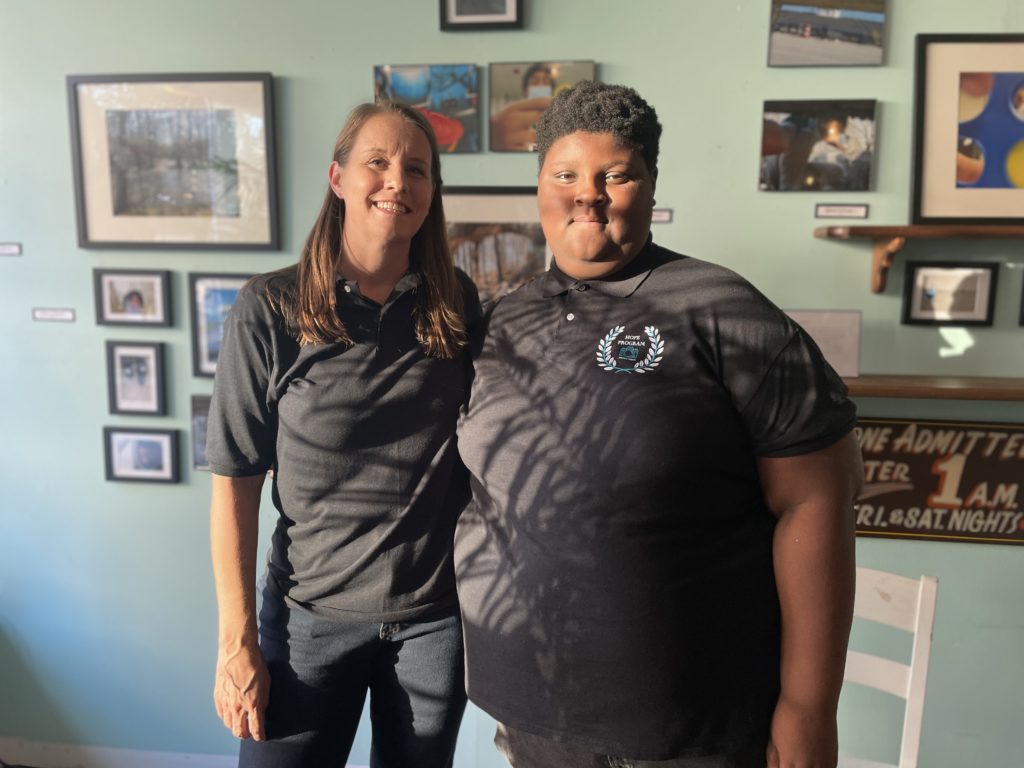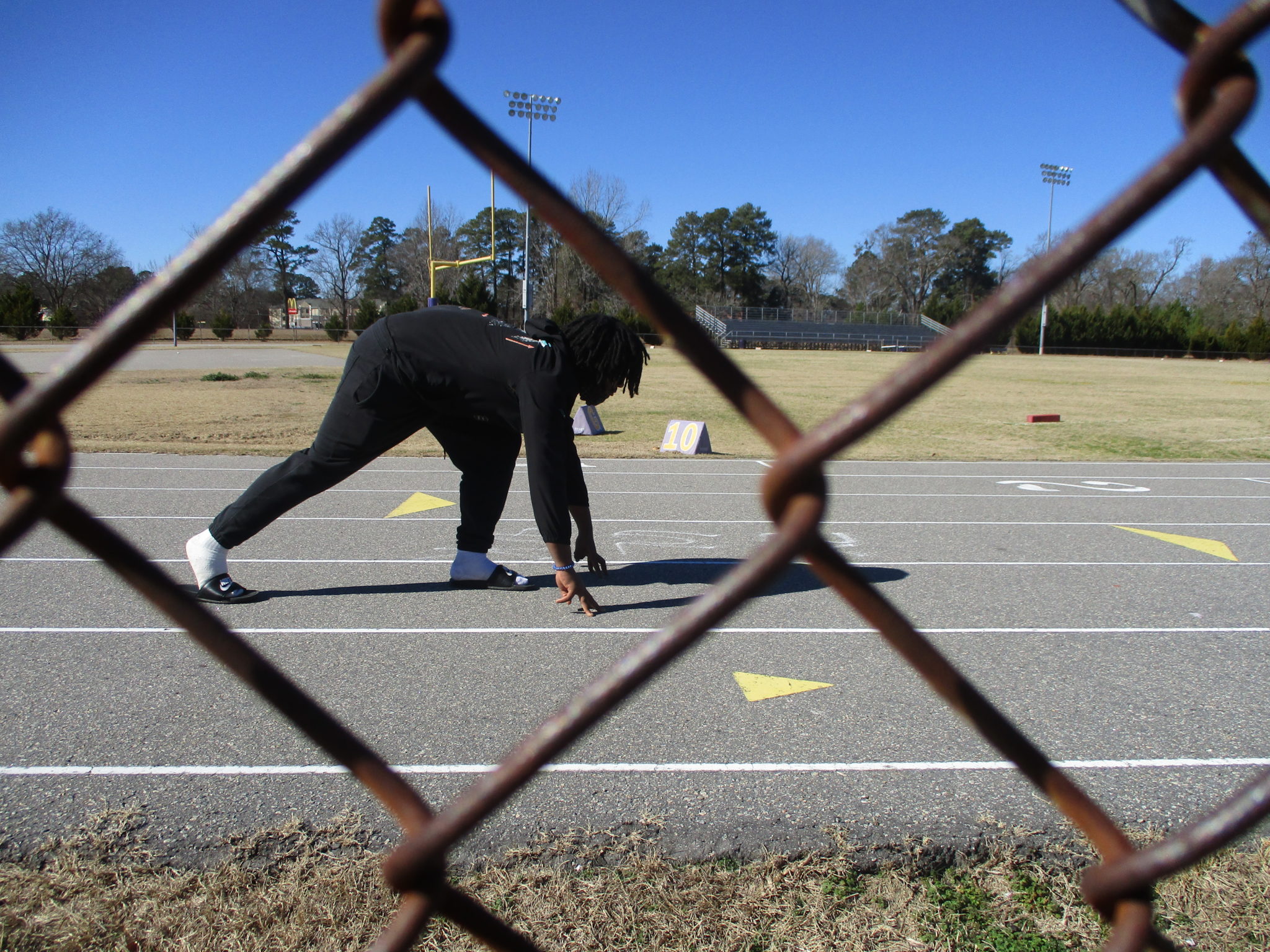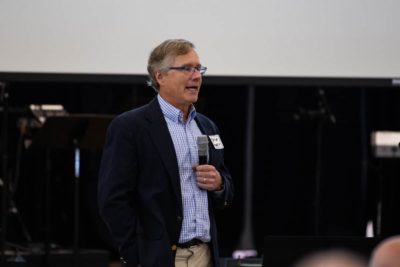

Share this story
- The HOPE program, which is part of @ECPSchools_NC, partnered with the Rural Opportunity Institute to encourage students to use their voice through photography.
- “'Y'all have got to find beauty in the things that surround you, right?'” Crystal Lancaster teaches in the HOPE program at @ECPSchools_NC. Find out how she’s helping her students use photography as a creative outlet.
|
|
Community members in Edgecombe County gathered on Aug. 18 to celebrate the photography of students from the Honor Opportunity Purpose Excellence (HOPE) alternative learning program.
The HOPE program, which is part of Edgecombe County Public Schools, partnered with the Rural Opportunity Institute (ROI) to encourage students to use their voice through photography.
The program is for students who are suspended from the traditional school setting. The district and HOPE’s staff have been focused on finding unique ways to support these students.
“We do not approach student supports with a one-size-fits-all mentality,” Robert Batts, the district’s director of secondary education, said, “but rather an approach that focus on individualized supports that are truly personalized to the academic, behavioral, or social needs of the student.”
Crystal Lancaster joined the HOPE program in 2016 and is now the history and English teacher for sixth through 12th grades. She has a heart for education and photography, and was looking for a way to channel these loves into a project for the program.
With support from the district and the HOPE team, Lancaster kicked off what would become the “Glimpses of HOPE” exhibition.
“One of the things as a teacher that’s very important to me that I try to tell my students is, ‘y’all have got to find beauty in the things that surround you, right?’ So we live in this age, where you can take one like one-tenth of a second and create an image of perfection, but that is not reality,” Lancaster said.
Lancaster worked with ROI to create the project. ROI supports individuals and organizations to become more trauma informed. According to co-founder Seth Seaugling, their focus is to get people to “be aware of how stress impacts our body and brain, and then to start to implement practices that can help us shift away from being less punitive, to being more restorative and healing.”


ROI began working with HOPE as a part of their Resilient Leaders Initiative. The nine-month initiative is a social accelerator program, where partner organizations work to better understand the challenges of the people that they serve. After examining an organization’s policies and practices, ROI further supports the organization through coaching and other resources to pilot new trauma-informed practices.
This program is led by Courtney Richardson, strategic initiatives program manager for ROI. Richardson said part of the initiative is known as “little bets.” This means that when developing new policies and practices, the teams test little ways to make improvements.
The staff at HOPE tested several little bets, one of which emerged as the student PhotoVoice project.
“It was an opportunity for them to build their self esteem and self confidence, but also opportunity for them to inspire others that may come across their photos.”
Quarry Williams, HOPE principal
The project allowed students to travel on field trips and acquire tangible skills with a camera as a means to express themselves. RWJF Culture of Health Fellow Jennifer Stratton brought additional support. Lancaster said Stratton not only taught students about the constructs, power, and ethics of photography, but exposed them to it “as a means of therapy and healing for themselves, their families and the community.”


To celebrate, Lancaster hosted a photo exhibit called “Glimpses of HOPE.” Located at Country Feedback, a local business in Tarboro, HOPE and ROI staff along with community members gathered to witness the display of student artwork.
Zimarion Staton was one student who was present to answer questions about his photos. Though he is no longer at HOPE, he was in sixth grade when he participated in the project. Staton shared that the project helped him to open up and build relationships with other students.
He said that he was already familiar with cameras of different types, but thanked Lancaster for the opportunity to go on trips and learn more about photography techniques.
When asked, “What gives you hope?” Zimarion responded:
“The people at HOPE.”
As a former school counselor and principal of HOPE, Quarry Williams said that his passion is seeing students be resilient, healing, and overcoming barriers to be successful.
“The Photovoice project is more than just photos for our students. It’s an opportunity for our students just to share their voice,” Williams said. “Also, it was an opportunity for them to build their self esteem and self confidence, but also opportunity for them to inspire others that may come across their photos.”
Seeing a room full of people who came to support the event, Lancaster said that she was in disbelief about how successful this little bet turned out. The experience also affirmed for her that she can make a difference as an educator.
You can see the students’ photos below.








































Editor’s note: A previous version of this post had the incorrect last name for Ty’Quarius McGuire.





